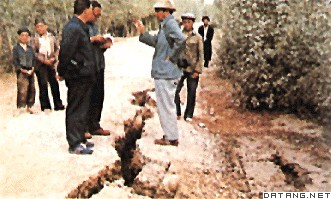1) structure design intensity


结构设防烈度
1.
In this paper, the total investment (the sum of system original cost and futureloss expectation) of the civil infrastructure system (CIS)is discussed and the relationship function between structure design intensity and system total investment is built.
针对土木基础设施网络系统 ,讨论了系统总投入 (造价与损失期望之和 )的评估方法 ,建立了结构设防烈度与系统总投入的函数关系 ,考虑未来损失期望 ,以系统总投入最小作为主要优化指标 ,进行了建筑结构最优设防烈度的优化决策 ,通过将系统优化变量转化为较少的离散变量 ,减轻了优化工作
2) fortification intensity


设防烈度
1.
Research on decision analysis method of seismic fortification intensity;


抗震设防烈度的决策分析方法研究
2.
This paper analyzes three eccentrically braced frames with different height-width ratio through finite element method software SAP2000,respectively loading earthquake load of fortification intensity 7 and 8 on the structures.
用有限元软件SAP2000对三种不同高宽比偏心支撑钢框架分别在7度和8度地震荷载作用下的内力进行了分析,从分析结果可知,高宽比越大,受地震荷载的作用影响越大,随着设防烈度的增大,这种影响更加明显。
3) high fortification intensity


高设防烈度
4) optimal fortification intensity


最优设防烈度
1.
Earthquake-resistant design of jacket platform based on optimal fortification intensity;


基于最优设防烈度的导管架海洋平台抗震设计
2.
In the decision of the optimal fortification intensity, both the cost and loss expectation of the structure are considered.
提出了一种非常便于应用的与现行规范接轨的抗震结构优化设计方法:首先决策出该结构的最优设防烈度,然后按此烈度进行结构的最小造价设计或常规设计。
3.
Combining PBSOD with decision-making methods of optimal fortification intensity, the concept of optimum design of aseismic structures based on optimal fortification intensity and damage per-formance is put forward, and the general optimum design procedure is given.
提出了基于性能的抗震优化设计概念,并将其与最优设防烈度的决策方法结合起来,提出了基于最优设防烈度和损伤性能的抗震结构优化设计概念,并给出了一般性的优化设计过程。
5) seismic fortification intensity


抗震设防烈度
1.
Lectotype optimization of mid-highrise residential building based on site conditions and seismic fortification intensity;
基于场地条件和抗震设防烈度的中高层住宅结构方案优选
2.
2 g,relevant seismic basic intensity is eight degree,and seismic fortification intensity of the earth dam is eight degree.
2g,相应地震基本烈度为Ⅷ度,土坝抗震设防烈度为Ⅷ度。
3.
In the design of building and civil engineering structures, the good preparation of some parameters such as the value of wind/snow load, seismic fortification intensity, and earthquake loads, etc.
进行工程结构设计时,做好对设计前期一些参数(风雪荷载取值、抗震设防烈度、抗震等级等)的准备以及当地实际情况的调研,可为顺利开展施工图设计提供保障。
6) optimal design intensity


最优设防烈度
1.
The method of decision of optimal design intensity is first proposed.


提出的优化方法采用了最新国际标准(ISO 2394,1998)所提出的优化策略作为目标函数,使结构全寿命预期总费用最小,其中包括结构造价、预期失效损失和预期维修和拆除费用;首先决策最优设防烈度而后进行结构参数优化设计的二阶段优化方法,使其可以与任何设计规范相结合;结构受到各级破坏的概率可根据场地基本烈度I_0和结构设防烈度I_d直接查表求出,从而极大地简化了优化设计的方法和计算过程;推荐了结构各级破坏损失值的一些经验参数;优化方法极其实用和简便。
补充资料:地震烈度
| 地震烈度 seismic intensity 地震发生时,在波及范围内一定地点地面振动的激烈程度。地面振动的强弱直接影响到人的感觉的强弱,器物反应的程度 ,房屋的损坏或破坏程度,地面景观的变化情况等。因此烈度的鉴定主要依靠对上述几个方面的宏观考察和定性描述。从概念上讲,地震烈度同地震震级有严格的区别,不可互相混淆。震级代表地震本身的大小强弱,它由震源发出的地震波能量来决定,对于同一次地震只应有一个数值。烈度在同一次地震中是因地而异的,它受着当地各种自然和人为条件的影响。对震级相同的地震来说,如果震源越浅,震中距越短,则烈度一般就越高。同样,当地的地质构造是否稳定,土壤结构是否坚实,房屋和其他构筑物是否坚固耐震,对于当地的烈度高或低有着直接的关系。
为了在实际工作中评定烈度的高低,有必要制订一个统一的评定标准。这个规定的标准称为地震烈度表。在世界各国使用的有几种不同的烈度表。西方国家比较通行的是改进的麦加利烈度表,简称M.M.烈度表,从I度到  度共分12个烈度等级。日本将无感定为0度,有感则分为I至Ⅶ 度,共8个等级。前苏联和中国均按12个烈度等级划分烈度表。中国1980年重新编订了地震烈度表(见表)。 度共分12个烈度等级。日本将无感定为0度,有感则分为I至Ⅶ 度,共8个等级。前苏联和中国均按12个烈度等级划分烈度表。中国1980年重新编订了地震烈度表(见表)。早期的烈度表完全以地震造成的宏观后果为依据来划分烈度等级。但宏观烈度表不论制订得如何完善,终究用的是定性的判据,不能排除观察者的主观因素。为此人们一直在寻找一种物理标准来评定烈度,这种物理标准既要同震害现象密切相关,又要便于用仪器测定。首先被研究的物理量是地震时的地面加速度峰值。因为一般认为地震引起的破坏是地震惯性力造成的,而惯性力又决定于地面加速度。这样就给烈度的每一等级附加上地面加速度峰值。结果表明,烈度每增加一度,加速度大约增加一倍。后来加入烈度表的物理量还有地面速度峰值。中国现行的烈度表已经加入了加速度和速度两项物理量数据。 |
说明:补充资料仅用于学习参考,请勿用于其它任何用途。
参考词条

